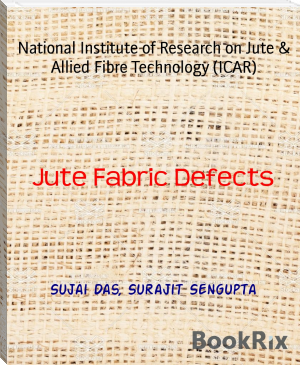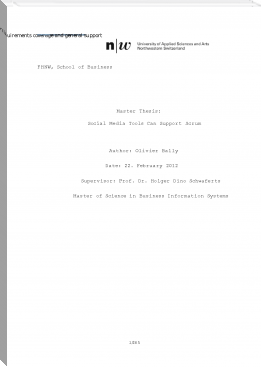Jute Fabric Defects by Sujai Das, Surajit Sengupta (classic children's novels .txt) 📕

Read free book «Jute Fabric Defects by Sujai Das, Surajit Sengupta (classic children's novels .txt) 📕» - read online or download for free at americanlibrarybooks.com
- Author: Sujai Das, Surajit Sengupta
Read book online «Jute Fabric Defects by Sujai Das, Surajit Sengupta (classic children's novels .txt) 📕». Author - Sujai Das, Surajit Sengupta
Using neural networks as a classifier requires two phases –a training phase and atesting phase. In the training phase, the neural network makes the proper adjustment for itsweights (W) to produce the desired response. When the actual output response is the same asthe desired one, the network has completed the training phase (i.e. it has acquired knowledge).In the testing phase the neural network is asked to classify a new set of images and its successis evaluated. In this work the neural networks were trained by the “backpropagation”algorithm to detect and classify the weaven fabric defects. The feature vectors were used asthe input vectors to the Neural Network.
Experiments and ResultsThe performance of the proposed fabric defect detection scheme is evaluated byusing a set of fabric images chosen from the Manual of Standard Fabric Defects in the textileIndustry. These images are captured by a digital camera. There are some defect-free images inthe database. The other images contain different types of fabric defects.The fabrics in the database are mainly plain weaving fabric, although other types offabrics are also included. In this paper, we select four types of defects images and all theimages have a size of 300x300 pixels and an 8-bit gray level. And we select four imagesdealing results which are shown in the following figure. The number of neural nodes of theinput layer was four corresponding to the four characteristic variables. The number of neuralnodes of the output layer was two so that the output values, i.e. 00,01,10,and 11,correspondedto the four classes of samples images .
ConclusionA new intelligent fabric defect inspection model was presented. Therecognizer acquires digital fabric images by image acquisition device and converts that imageinto binary image by restoration and threshold techniques. The output of the processed imageis used as an input to the Neural Network (NN) which uses back propagation algorithm tocalculate the weighted factors and generates the desired classification of defects as an output.The experiment results show that the proposed method is feasible and applicable in textileproduction factories for defect detection and classification.
Refrences
Kai-Ling Mak and Pai Peng, Ka-Fai Cedric Yiu, (2012), “Fabric Defect Detection Using Multi-Level Tuned-Matched Gabor Filters”, Journal Of Industrial And Management Optimization Volume 8, Number 2, May 2012.
R. Thilepa, K. Sathiyasekar, (2012), “Automated Fabric Defect Recognition System using Image Processing and Artificial Neural Networks with the Support of Microcontroller”, European Journal of Scientific Research, ISSN 1450-216X Vol.67 No.4 (2012), pp. 595-601.
R. Thilepa, K. Sathiyasekar, (2012), “Automated Fabric Defect Recognition System using Image Processing and Artificial Neural Networks with the Support of Microcontroller”, European Journal of Scientific Research, ISSN 1450-216X Vol.67 No.4 (2012), pp. 595-601.
Narges Heidari, Reza Azmi, Boshra Pishgoo “Fabric Textile Defect Detection, By Selecting A Suitable Subset Of Wavelet Coefficients, Through Genetic Algorithm”, International Journal of Image Processing (IJIP), Volume (5) : Issue (1) : 2011.
Liang-Ying Wei “An expanded Adaptive Neuro-Fuzzy Inference System (ANFIS) model based on AR and causality of multination stock market volatility for TAIEX forecasting”, January, 2011.
R. Furferi, L. Governi and Y. Volpe “Neural Network based classification of car seat fabrics”, INTERNATIONAL JOURNAL OF MATHEMATICAL MODELS AND METHODS IN APPLIED SCIENCES, Issue 3, Volume 5, 2011.
S.Priya, T. Ashok kumar, Dr. Varghese Paul “A Novel Approach to Fabric Defect Detection Using Digital Image Processing”, Proceedings of 2011 International Conference on Signal Processing, Communication, Computing and Networking Technologies (ICSCCN 2011) .
Henry Y. T. Ngan, Member, IEEE, Grantham K. H. Pang, Senior Member, IEEE, and Nelson H. C. Yung, Senior Member, IEEE “Performance Evaluation for Motif-Based Patterned Texture Defect Detection”, IEEE Transactions On Automation Science And Engineering, Vol. 7, No. 1, January 2010.[12] K.L. Mak, X. W. Tian, “Textile Fabric Flaw Detection Using Singular Value Decomposition”, 978-1-4244-6878-2/10/$26.00 ©2010 IEEE.
Yiling Chen, Tse-Wei Chen, shao-yichen “Fast texture feature extraction method based on segmentation for image retrieval” by 13th IEEE International Symposium on consumer electronics, 2009.
Henry Y. T. Ngan, Student Member, IEEE, and Grantham K. H. Pang, Senior Member, IEEE “Regularity Analysis for Patterned Texture Inspection” IEEE Transactions On Automation Science And Engineering, Vol. 6, No. 1, January 2009.
Yin KaiCheng, Yu Weidong, "Clothing Defect Detection System Based on Image Processing Technology", The Computer System Applications, 2008.10, pp.7-10.
Ma HongLong, "Fabric Defect Detection Analysis and Design Based on Image Recognition " , Beijing University of Technology Master's thesis, 2007.
Lu Yun, Zhang Jingmiao, "FAbric Defect Detection Method Based on Image Distance Difference", Micro-computer Information, No 23,2007, pp.306-308.
Atiqul Islam, Shamim Akhter, and Tumnun E. Mursalin, "Automated Textile Defect Recognition System Using Computer Vision and Artificial Neural Networks", World Academy of Science, Engineering and Technology 13 2006.
Hao Liu, Jiuqiang Han, "Defect Detection in Textiles Using Optimal Gabor Wavelet Filter", Proceedings of the 6th World Congress on Intelligent Control and Automation, June 21 - 23, 2006, Dalian, China.
ImprintPublication Date: 02-23-2015
All Rights Reserved





Comments (0)